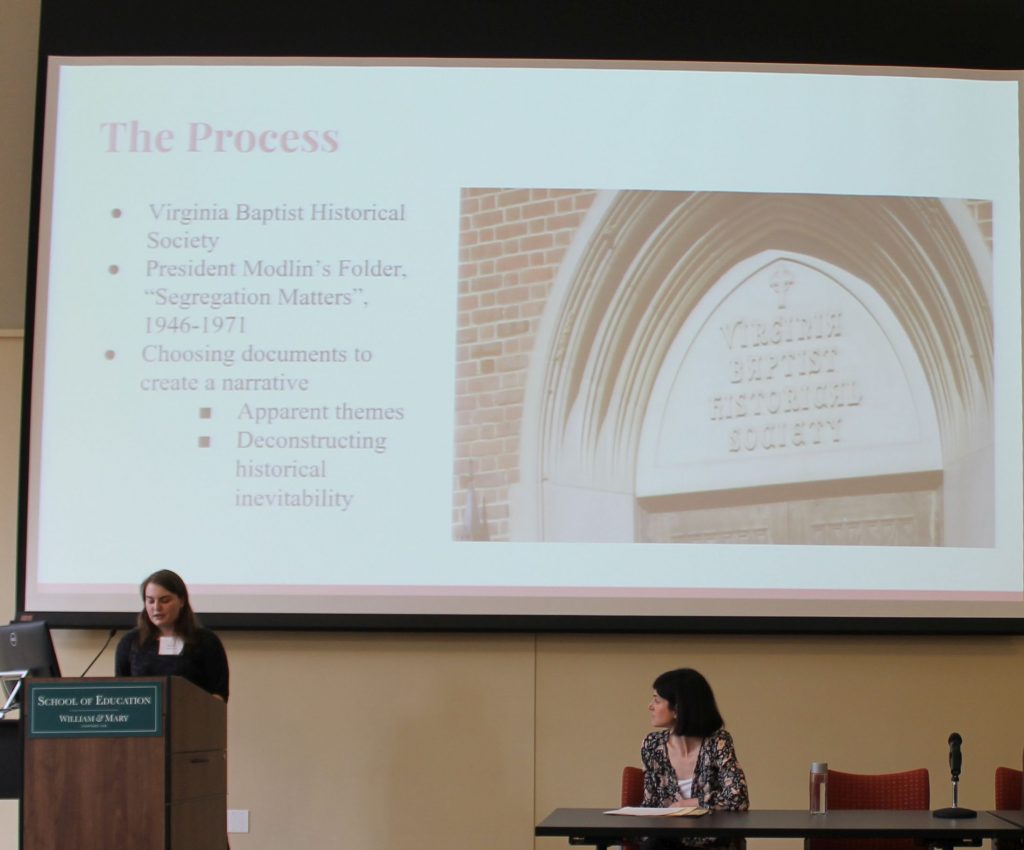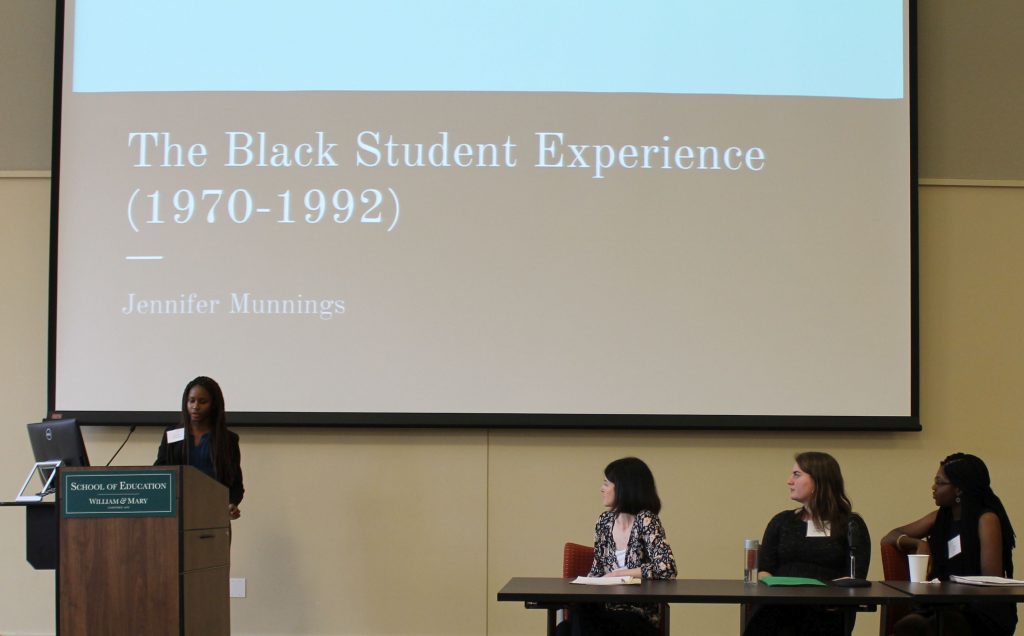[For the first blog post of the Summer 2018 A&S Research Fellowship, students were tasked with exploring the existing collection of the Race & Racism at UR Project at memory.richmond.edu and reflecting on the materials they encountered there.]
by Catherine Franceski
Catherine Franceski is rising junior from Washington, D.C. majoring in Philosophy, Politics, Economics & Law (PPEL) with concentration in politics and minoring in Rhetoric & Communication Studies. She is the president of Phi Alpha Delta pre-law fraternity, and a member of the Westhampton College Honor Council. This is her second year working on the Race & Racism Project. Last summer, she focused on studying the lives and legacies of “hidden” black figures in Richmond, Virginia’s history.
When I came to the University of Richmond in the fall of 2016, I thought I knew the school very well. My mother had attended UR, my brother was a current student, and other family members had different connections to the school. I had grown up outside of D.C., coming to campus for reunions, family weekends, and other events. Although I knew a bit about the history of the school and the social culture of campus, I did not know anything about the history of the school’s interaction with the city of Richmond, the rocky road to integration, or the black student experience.
I worked on the Race & Racism Project last summer compiling hidden narratives about inspirational figures in the city of Richmond’s history and learning about the history of black students on campus. This included gaining a whole new insight into the isolation and exclusion black students have felt, and continue to feel, on campus. When I returned to school in the fall, I realized my work on the project last summer allowed be to become a more culturally competent and aware student, as well as a better ally for students of color on this campus.

 On March 16, 2018, five undergraduate students who have worked with the Race & Racism at the University of Richmond Project had the opportunity to present at the Lemon Project Symposium at the College of William and Mary. The panel, entitled “Seeing the Unseen and Telling the Untold: Institutions, Individuals, and Desegregating the University of Richmond,” was moderated by Dr. Nicole Maurantonio and featured Dominique Harrington, Madeleine Jordan-Lord, Elizabeth Mejía-Ricart, Jennifer Munnings, & Destiny Riley. Below you will find the text and slide images of Madeleine Jordan-Lord’s presentation, focusing on the research she conducted while taking “Digital Memory & the Archive in the fall of 2016.”
On March 16, 2018, five undergraduate students who have worked with the Race & Racism at the University of Richmond Project had the opportunity to present at the Lemon Project Symposium at the College of William and Mary. The panel, entitled “Seeing the Unseen and Telling the Untold: Institutions, Individuals, and Desegregating the University of Richmond,” was moderated by Dr. Nicole Maurantonio and featured Dominique Harrington, Madeleine Jordan-Lord, Elizabeth Mejía-Ricart, Jennifer Munnings, & Destiny Riley. Below you will find the text and slide images of Madeleine Jordan-Lord’s presentation, focusing on the research she conducted while taking “Digital Memory & the Archive in the fall of 2016.”  On March 16, 2018, five undergraduate students who have worked with the Race & Racism at the University of Richmond Project had the opportunity to present at the Lemon Project Symposium at the College of William and Mary. The panel, entitled “Seeing the Unseen and Telling the Untold: Institutions, Individuals, and Desegregating the University of Richmond,” was moderated by Dr. Nicole Maurantonio and featured Dominique Harrington, Madeleine Jordan-Lord, Elizabeth Mejía-Ricart, Jennifer Munnings, & Destiny Riley. Below you will find the text and slide images of Jennifer Munnings’s presentation, focusing on the research she conducted as a 2017 A&S Summer Research Fellow with the project.
On March 16, 2018, five undergraduate students who have worked with the Race & Racism at the University of Richmond Project had the opportunity to present at the Lemon Project Symposium at the College of William and Mary. The panel, entitled “Seeing the Unseen and Telling the Untold: Institutions, Individuals, and Desegregating the University of Richmond,” was moderated by Dr. Nicole Maurantonio and featured Dominique Harrington, Madeleine Jordan-Lord, Elizabeth Mejía-Ricart, Jennifer Munnings, & Destiny Riley. Below you will find the text and slide images of Jennifer Munnings’s presentation, focusing on the research she conducted as a 2017 A&S Summer Research Fellow with the project. 


 The Collegian article titled “
The Collegian article titled “